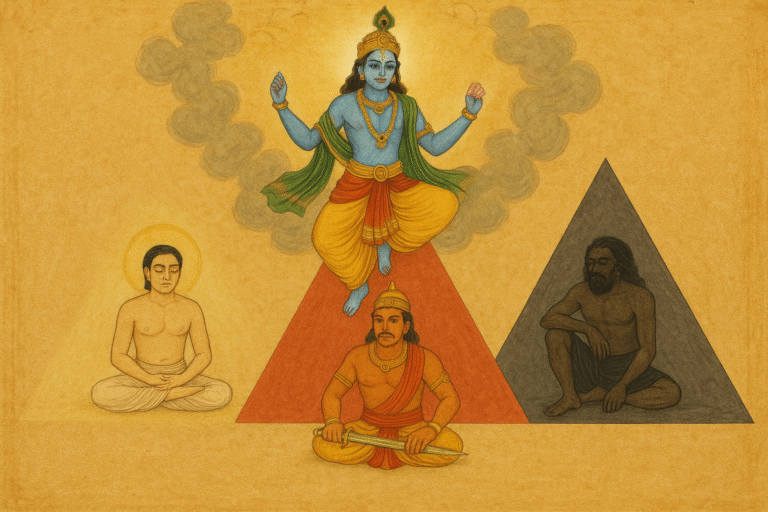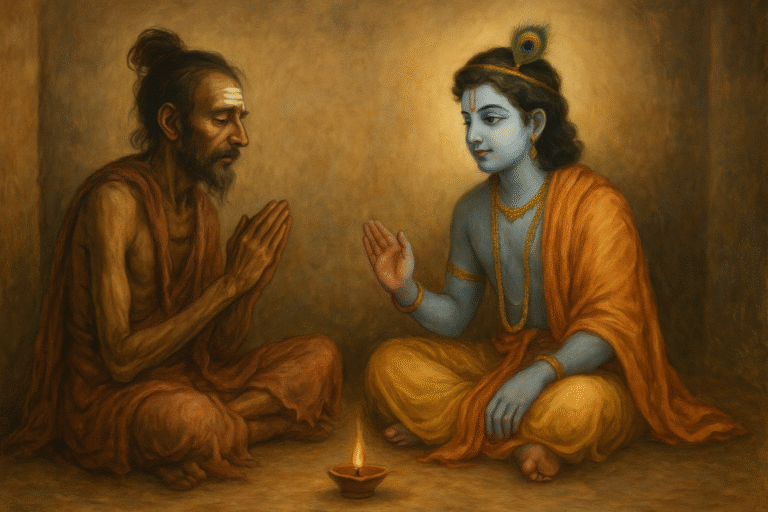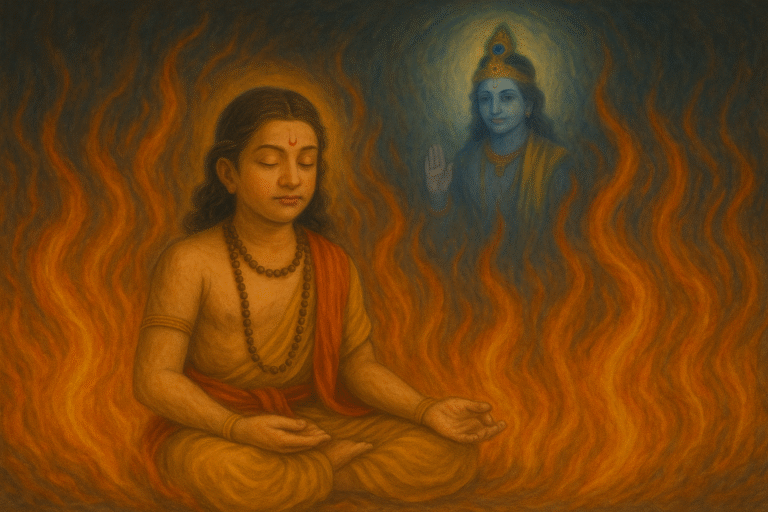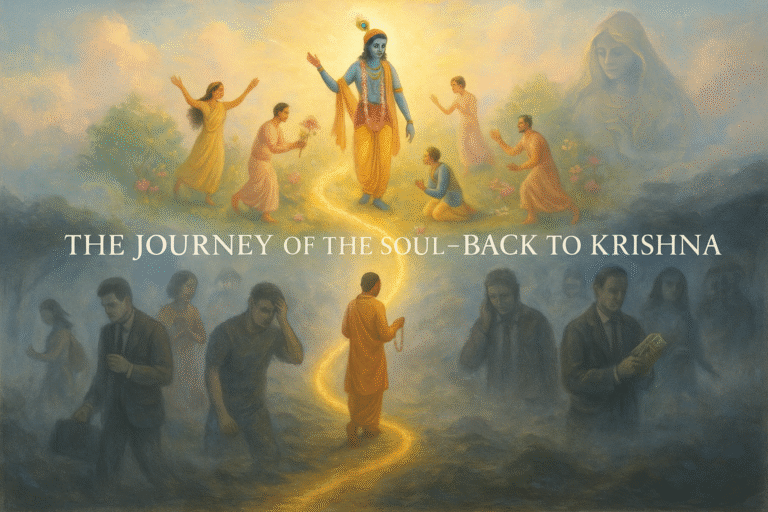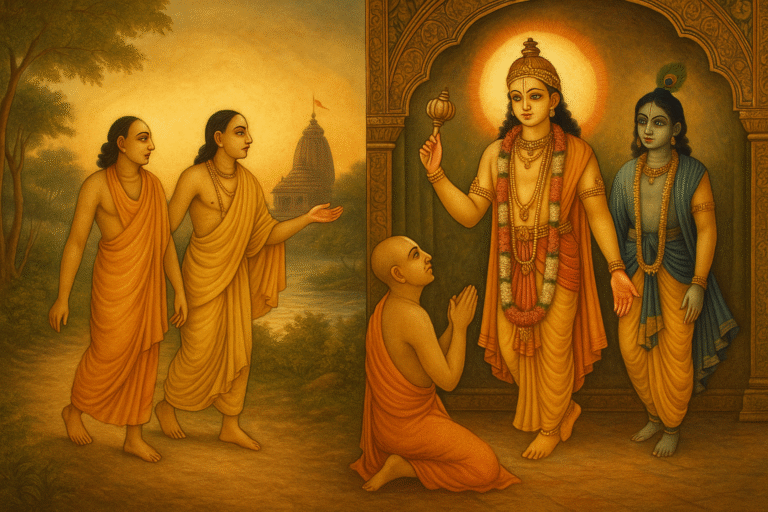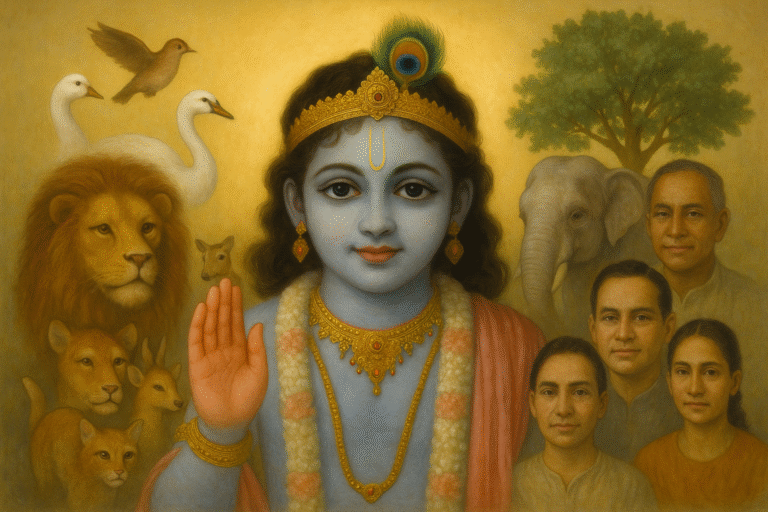The Evolution of Indian Philosophy: From Buddha to Ramanujacharya
The journey from Buddha to Shankaracharya to Ramanujacharya reflects a divine plan in India’s spiritual evolution. Buddha rejected distorted rituals to restore compassion, Shankaracharya revived Vedic supremacy through Advaita, and Ramanujacharya revealed the personal God through devotion. Together, they show how consciousness progresses from ritual, to realization, to loving surrender before the Supreme.

Introduction
The spiritual history of India is a progressive revelation. Different teachers appeared at different times, not to contradict each other but to guide humanity according to its capacity. The trajectory from Buddha to Adi Shankaracharya to Ramanujacharya shows a gradual movement: from rejecting distorted ritualism, to reviving Vedic supremacy, to finally revealing the personal nature of God. To understand this journey, we must first know why the Vedas prescribed rituals and sacrifices in the first place.
Vedic Sacrifices: Their Purpose and Misuse
The Purpose of Sacrifices
The Vedas are vast and address human beings at different stages of spiritual evolution. Not everyone is ready for meditation or pure devotion. Many people are attached to material desires — wealth, progeny, prosperity. To regulate these desires and gradually elevate people, the Vedas prescribed yajñas (sacrifices).
- Sacrifices had a purpose: by offering to the devas (demigods) under Vedic injunctions, people could fulfill desires in a controlled, dharmic way.
- They created discipline: rituals tied humans to sacred duties, reminding them that they are not independent.
- They acknowledged higher powers: every offering was an act of gratitude to the divine forces sustaining the universe.
- They were steps: the ultimate aim was not ritual itself but purification of consciousness, leading to realization of Brahman and eventually devotion to Bhagavan.
The Bhagavad Gita (3.10–11) explains that yajña was created by the Lord at the beginning, as a way for humans and devas to cooperate in maintaining the cosmic order.
The Problem: Distortion and Animal Sacrifice
Over time, these sacrifices lost their spirit and became mechanical. Priests emphasized form over essence, and kings used sacrifices for display of power. The most controversial aspect was animal sacrifices:
- In the original Vedic context, certain sacrifices (like ashvamedha or gomedha) were not meant for cruelty. The properly chanted mantras were said to grant a new, better life to the animal, not mere killing.
- But when priests became careless, and mantras were misused, it degraded into slaughter in the name of religion.
- Instead of purifying consciousness, sacrifices were now fueling greed, violence, and exploitation.
This decline set the stage for a radical reformer — Lord Buddha.
Buddha: Compassion Against Ritualism
Why Buddha Came
By 500 BCE, society was drowning in hollow ritualism. The compassionate Lord appeared as Buddha to stop this misuse. The Bhagavatam (1.3.24) describes Buddha as an incarnation who appeared to delude atheists but also to protect innocent beings from violence.
His Teachings
- He rejected the Vedas (because people were misusing them).
- He emphasized ahimsa (non-violence) as the highest dharma.
- He taught meditation, morality, and simplicity.
Buddha’s denial of the Vedas was a strategy of compassion. By removing faith in distorted rituals, he purified society. But his teaching stopped short of acknowledging the personal God — it leaned toward voidism (shunyavada).
Adi Shankaracharya: Reviving the Supremacy of the Vedas
Why Shankaracharya Came
After centuries of Buddhist dominance, the authority of the Vedas was almost lost. Without Vedic foundation, Indian culture risked disintegration. Adi Shankaracharya (8th century CE) appeared to re-establish Vedic supremacy and to intellectually defeat Buddhism.
His Teachings
- He taught Advaita Vedanta (non-duality).
- Brahman is the only reality; the world is maya.
- Liberation means merging into Brahman, transcending individuality.
- He restored reverence for the Upanishads, Gita, and Brahma Sutras.
Why Only Till Brahman?
Shankaracharya’s purpose was restoration, not completion. He emphasized the impersonal Brahman because:
- It countered Buddhist voidism with a “positive absolute.”
- It provided a strong intellectual framework.
- It brought back the authority of the Vedas in an age of skepticism.
But Advaita left little scope for personal devotion. God was treated more as an impersonal principle than a loving person. This paved the way for the next step.
Ramanujacharya: The Path of Loving Devotion
Why Ramanuja Came
By the 11th century CE, Advaita had restored Vedic respect, but people longed for a more personal, heart-centered connection with God. Ramanujacharya came to fulfill this need.
His Teachings
Through Visishtadvaita Vedanta (qualified non-dualism), Ramanuja declared:
- Brahman is real, but not impersonal. He is Narayana, the Supreme Person.
- The soul is distinct but eternally connected to God, like a spark to a fire.
- Liberation comes through bhakti (devotion) and prapatti (surrender), not merging.
- God has qualities (saguna), form, and love.
His Contribution
Ramanuja transformed the cold abstraction of Brahman into a living, personal God with whom the soul can have an eternal relationship. This was a giant leap in spiritual evolution: from ritual → impersonal realization → to loving devotion.
Conclusion
The progression from Buddha to Shankaracharya to Ramanujacharya shows the divine plan of elevating human consciousness step by step:
- Buddha rejected distorted sacrifices and established compassion as the foundation.
- Shankaracharya revived the Vedas and gave a strong intellectual base through Brahman realization.
- Ramanujacharya revealed the deeper truth — that Brahman is personal, and the highest goal is loving devotion to the Supreme.
Thus, the Vedic sacrifices, though once misused, served as stepping stones. Buddha corrected their distortion, Shankara revived their authority, and Ramanuja revealed their true culmination in bhakti.
✨ The story of these great teachers is not of conflict but of completion. Each one prepared humanity for the next step, ultimately pointing toward the eternal truth: the soul’s natural position is to serve and love the Supreme Lord.

